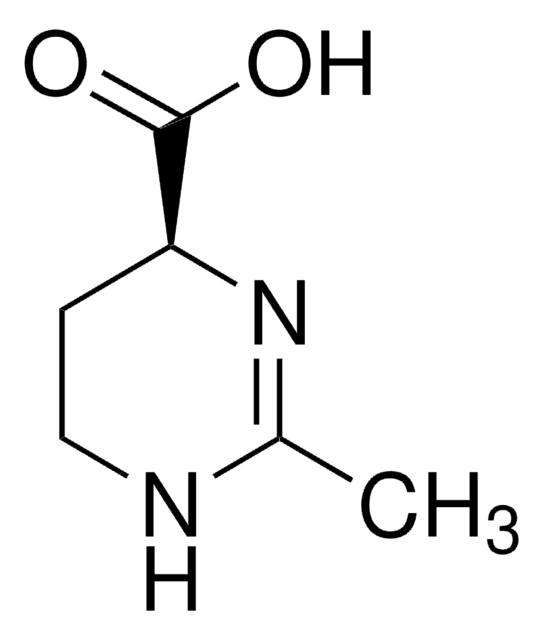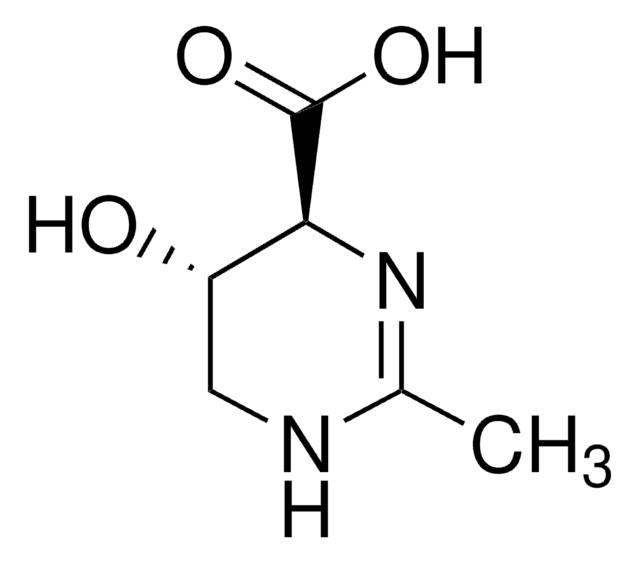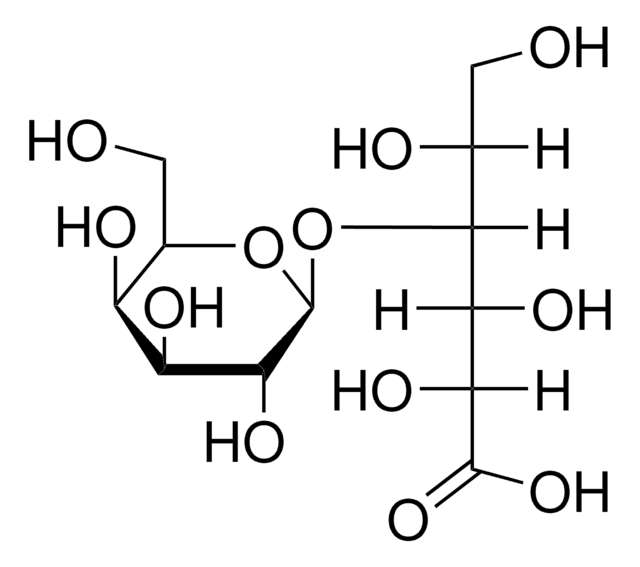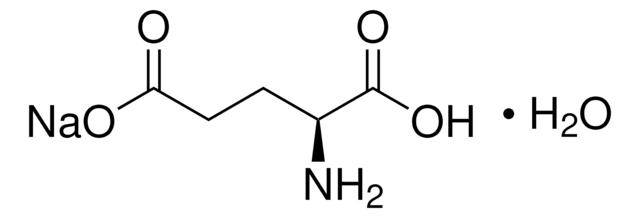81619
Ectoine
≥95.0% (HPLC)
Sinonimo/i:
(S)-2-Methyl-1,4,5,6-tetrahydropyrimidine-4-carboxylic acid, Thp(B)
About This Item
Prodotti consigliati
Livello qualitativo
Saggio
≥95.0% (HPLC)
Forma fisica
powder
PM
142.16 g/mol
Condizioni di stoccaggio
dry at room temperature
Colore
white
Solubilità
methanol: soluble 10 mg/mL, clear, colorless to almost colorless
Stringa SMILE
CC1=N[C@@H](CCN1)C(O)=O
InChI
1S/C6H10N2O2/c1-4-7-3-2-5(8-4)6(9)10/h5H,2-3H2,1H3,(H,7,8)(H,9,10)/t5-/m0/s1
WQXNXVUDBPYKBA-YFKPBYRVSA-N
Cerchi prodotti simili? Visita Guida al confronto tra prodotti
Descrizione generale
Applicazioni
Azioni biochim/fisiol
Altre note
Codice della classe di stoccaggio
11 - Combustible Solids
Classe di pericolosità dell'acqua (WGK)
WGK 1
Punto d’infiammabilità (°F)
Not applicable
Punto d’infiammabilità (°C)
Not applicable
Dispositivi di protezione individuale
dust mask type N95 (US), Eyeshields, Gloves
Scegli una delle versioni più recenti:
Possiedi già questo prodotto?
I documenti relativi ai prodotti acquistati recentemente sono disponibili nell’Archivio dei documenti.
I clienti hanno visto anche
Il team dei nostri ricercatori vanta grande esperienza in tutte le aree della ricerca quali Life Science, scienza dei materiali, sintesi chimica, cromatografia, discipline analitiche, ecc..
Contatta l'Assistenza Tecnica.











